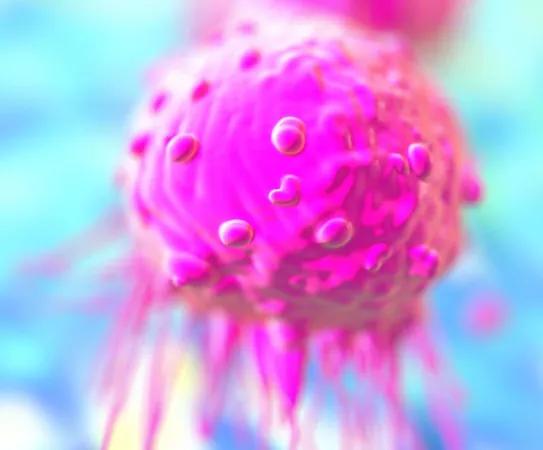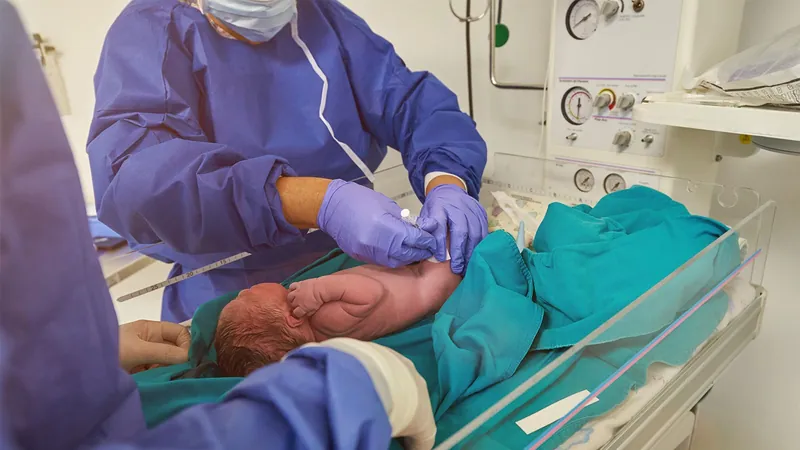
Groundbreaking Study Reveals Hypofractionated Radiation Therapy is Just as Safe as Traditional Normofractionated Treatment for Early Breast Cancer Patients!
2024-09-15
Introduction
In a significant breakthrough for breast cancer treatment, a recent study presented at the 2024 European Society of Medical Oncology (ESMO) Congress has found that moderately hypofractionated locoregional radiation therapy is just as effective as traditional normofractionated radiation therapy regarding the risk of lymphedema in patients diagnosed with early-stage breast cancer. This pivotal research stems from the phase 3 HypoG-01 trial (NCT03127995), suggesting a shift in treatment paradigms that could benefit many patients.
Key Findings
Dr. Sofia Rivera, MD, PhD, from the Department of Oncology at the Institut Gustave Roussy in France, emphasized during her presentation that hypofractionated radiotherapy showed no detrimental effects on safety, survival rates, or overall patient outcomes. “Given the advantages in treatment time and patient burden, I strongly advocate for the adoption of the 3-week regimen, including for those requiring nodal radiotherapy,” she stated.
With a median follow-up period of 4.8 years, researchers observed no significant difference in the cumulative incidence of arm lymphedema between the two treatment approaches. Specifically, 33.3% of patients in the hypofractionated group developed lymphedema compared to 32.8% in the normofractionated group. Rivera pointed out the importance of this finding, as approximately a third of patients experienced this complication.
Survival Rates and Side Effects
Additionally, hypofractionated radiotherapy did not negatively impact survival rates. The study reported a hazard ratio (HR) for breast cancer-specific survival of 0.53 and an overall survival HR of 0.59, indicating that patients receiving hypofractionated treatment may have improved outcomes, although these results require further investigation due to limited statistical power.
The analysis also covered shoulder range of motion, revealing that both treatment modalities had similar impairment rates. Only 19.6% of patients in the hypofractionated arm experienced limited shoulder movement after 5 years, compared to 20.7% in the normofractionated arm.
Adverse events were minimally present in both study groups, with 12.7% of patients in the hypofractionated group sustaining grade 3 or higher complications. Notably, no grade 5 events—typically the most severe category—occurred. The occurrence of serious adverse events was balanced across both treatment arms, with radiation-related complications relatively rare.
Study Background
Further study background revealed the evolution of breast cancer radiotherapy over recent years, moving from standard treatments involving 25 fractions over five weeks to more efficient hypofractionation. Notably, the trial included 1,265 women over a diverse array of clinical settings across France, who were treated for T1-3, N0-3, M0 breast cancer.
Following randomization, participants received either hypofractionated radiation (40 Gy over 15 fractions in three weeks) or normofractionated radiation (50 Gy over 25 fractions in five weeks). The primary endpoint focused on the 3-year cumulative incidence of arm lymphedema, with significant stratification based on factors like mastectomy type and body mass index (BMI)—a known risk factor for developing lymphedema.
Conclusion
This trial marks a promising advancement in breast cancer treatment, potentially leading to more effective and patient-friendly options. With hypofractionated radiotherapy now demonstrating comparable safety and effectiveness to traditional methods, patients may have the opportunity for shorter treatment durations without compromising their health—an essential factor in the journey to recovery.
Stay tuned for more updates as we uncover how this transformative study could reshape the future of breast cancer therapies!



 Brasil (PT)
Brasil (PT)
 Canada (EN)
Canada (EN)
 Chile (ES)
Chile (ES)
 España (ES)
España (ES)
 France (FR)
France (FR)
 Hong Kong (EN)
Hong Kong (EN)
 Italia (IT)
Italia (IT)
 日本 (JA)
日本 (JA)
 Magyarország (HU)
Magyarország (HU)
 Norge (NO)
Norge (NO)
 Polska (PL)
Polska (PL)
 Schweiz (DE)
Schweiz (DE)
 Singapore (EN)
Singapore (EN)
 Sverige (SV)
Sverige (SV)
 Suomi (FI)
Suomi (FI)
 Türkiye (TR)
Türkiye (TR)